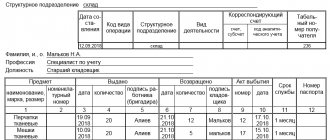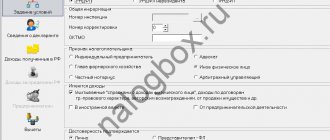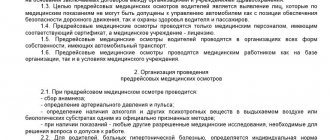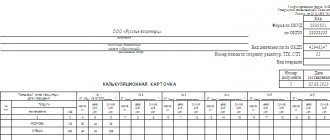Fire extinguisher logbook: how to fill out, example
As we know, there are strict rules regarding having a fire extinguisher log book. However, there are no strict requirements for filling out the journal itself. There is also no uniform form for such a journal. The fire department allows accounting to be kept arbitrarily.
Very often, a barn book is used for this accounting. Existing columns are renamed and additional ones are added.
is allocated for each individual fire extinguisher .
You can read how to properly conduct fire safety training in the workplace and fill out the appropriate log here.
What must be included in the fire extinguisher logbook?
The log indicates:
- device serial number; installation location;
- device type;
- charge mass;
- fire extinguisher weight;
- date of last check;
- date of next inspection.
The journal must be filled in with ink of the same color. After each new entry, the signature of the responsible person and the date are affixed.
Fire extinguisher logbook - a sample form you can download here.
The procedure for filling out the fire extinguisher logbook
Let's talk about how and what is important to write about in the fire extinguisher log book.
Form of operational passport for a fire extinguisher.
- The first paragraph indicates the date of the technical inspection. service and its type. So, information about the inspection of the fire extinguisher is recorded annually in this column. Checking fire extinguishers is essentially the responsibility of the person responsible for the condition of the primary fire extinguishing equipment (deputy director of the supply manager, other authorized person).
- The second paragraph describes the external condition of the fire extinguisher and the condition of its components.
- In this column, based on the inspection, the current condition of the device is indicated (excellent, good, double).
- Next, the total weight of the fire extinguisher is recorded. Everything here is not difficult - you just need to indicate the data written by the manufacturer on the fire extinguisher label.
- Afterwards the pressure or mass of the gas cylinder is indicated. This column is also filled in according to what is written on the label.
- Then, if necessary, we will deal with the condition of the chassis of the mobile fire extinguisher. This column must be filled in only if the fire extinguisher is mobile. The condition is again excellent, good and satisfactory. In the case of other types of fire extinguishers, a dash is added.
- We will indicate the measures taken to eliminate the noted deficiencies . If no deficiencies have been identified, then we will simply put a dash. If there are deficiencies, a detailed description of the measures to eliminate them is necessary.
- The final step in filling out the journal will be to certify the journal with a signature, as well as indicating the position and recording the date of completion.
How often does it require filling?
Speaking about the frequency of filling out the log, you need to remember the basic rule - the fire extinguisher is recharged once every five years, and the cylinders are inspected every six months. Depending on this, the logbook is filled out.
For example, if from the beginning of the enterprise all fire extinguishers were purchased and installed at the same time, then the next reconciliation will take place in six months.
If for some reason the fire extinguisher fails after four months and it is replaced with a new one, then the inspection schedule will be shifted. The remaining fire extinguishers will need to be checked after two months, as soon as the allotted time has expired, while the last new fire extinguisher need not be checked, because it was tested two months earlier, when replacing a broken device.
At first, keeping records will be easy, since most of the fire extinguishers will be checked at one time, but as soon as some of them are replaced at different times, the fire safety officer must be vigilant and check the fire extinguishers depending on the timing of a particular device.
Fire safety officials should remember that foam fire extinguishers and water fire extinguishers with additives are recharged every year.
https://youtu.be/9TLXGJjbZd0
Fire extinguisher certificate
How to correctly draw up an act on the destruction of documents at an enterprise - read here.
Contents of the passport
The passport consists of two parts:
- The first part is filled out immediately after the equipment is put into operation. The responsible employee, according to the order at the enterprise, enters the primary data on the fire extinguisher from its technical passport into the passport (this is done once). Information must be entered in accordance with the data in the technical log. service.
- The second part of the passport contains all the same information as in the fire extinguisher logbook for a given fire extinguisher.
The operating certificate for a fire extinguisher - a sample of the filling can be downloaded from the link.
In accordance with regulatory documents, a passport is created for each fire extinguishing agent registered with the facility. Any use of a fire extinguishing agent without correctly completed documents is impossible and prohibited.
The body of each fire extinguisher is painted with indelible paint. This number is also duplicated in the fire extinguisher logbook.
Operational passport for a fire extinguisher - an example of filling it out for an enterprise:
Sample operational certificate for a fire extinguisher.
You can find out how to correctly fill out the logbook for checking and testing electrical tools and filling out this document in our new publication.
Regulatory regulation of fire extinguisher accounting
Decree of the Government of the Russian Federation dated April 25, 2012 N 390 regulates the provision of fire extinguishing means. The head of the organization is responsible for providing fire extinguishers and keeping records of them in a log, compiled in any form, but taking into account the recommendations.
In this case, each fire extinguisher must be maintained in accordance with SP 9.13130.2009.
Requirements for the operation of fire extinguishers are reflected in NPB 166-97.
At the same time, all costs associated with ensuring fire safety in accordance with Art. 264 of the Tax Code of the Russian Federation, part 2, relate to other expenses.
Magazine design rules
The current legislation does not establish any unified form, so each enterprise develops it independently. However, in order to avoid possible problems during the inspection, it is worth playing it safe and getting the document approved by the fire inspectorate by sending there a request with a form. After receiving an official response from the department, it is necessary to take into account all the comments received and approve the journal by order of the head. The letter itself from the inspectors of OND GPN should also be saved; it may be useful during a future inspection by fire inspection authorities.
However, certain rules for observing fire safety in organizations are still regulated by Decree of the Government of the Russian Federation of April 25, 2012 No. 390. In particular, the obligation to keep a special journal is established, which must indicate the following information:
- brand and number of the fire extinguisher;
- date of its commissioning;
- location;
- information about the substance filled;
- technical condition assessment;
- date of inspection and comments;
- maintenance date;
- the organization that carried out the refueling;
- date of pressure verification;
- period of strength testing;
- comments;
- Full name and signature of the responsible person.
In accordance with legal requirements, accounting for fire extinguishers and accounting for other fire extinguishers should be recorded in two different journals. Each organization should develop a sample for filling out a fire extinguisher logbook; an example of such a document should be in front of your eyes in order to avoid errors and deviations from the approved form.
Journaling Guidelines
Experts from fire safety authorities are of the opinion that the document in question should contain a number of certain information. First of all, this is the model and type of fire extinguisher you have. Next, you should provide information about the extinguishing components and the total weight of the device. In the completed log, you must make a note about the product identification number assigned during the initial inspection.
The log is designed to record existing fire extinguishing equipment and monitor their maintenance
You should also indicate the dates of manufacture and initial inspection of the equipment. If there is an indicator, you should take readings and make a corresponding note. If there is no pressure sensor, the mass of the cylinder itself is indicated. The fire extinguisher logbook must contain information about the location of fire extinguishing equipment, as well as information about maintenance. After completing these sections, information about the official responsible for the equipment is indicated.
The operational passport of the product contains notes not only in the above sections, but also in those relating to the condition of the main components of the structure. This document must record all activities carried out to repair and refill the fire extinguisher.
Example: how to fill out a fire extinguisher logbook
1. Title page. Here you must indicate the details of the organization, the start date of maintaining the document and its end date.
2. First section. It indicates the characteristics of all fire extinguishers in the enterprise, the exact location of their installation, the pressure level and the brand of the filling agent.
3. Second section. It contains information about the technical condition of the PSP, dates of inspections and recharges. In this case, it is necessary to indicate the name of the company that provided the service.
4. Third section. Here you should indicate information about the tests performed, as well as the details of the persons responsible for the inspection.
Since the document is in magazine format, it must be bound and numbered. The inscription: “Stitched, numbered sheets” must be certified by the responsible employee indicating the full name and position. If there is a company seal, its imprint must be placed in such a way that part of it is located on the cover, and part of it is on the inscription “Stitched, numbered sheets.”
Appointment of responsible persons
The appointment of an official responsible for fire extinguishing means, as well as accounting and maintenance, occurs through an order issued by the organization's management. The task of authorized persons is to carry out timely quality checks of the devices entrusted to them. There is no legal regulation regulating this process, but despite this, there are a number of rules that should be followed when maintaining documentation.
You should also pay attention to the fact that the presence of minimal information about the equipment is not a basis for the imposition of sanctions by inspection authorities. In order to eliminate possible misunderstandings, a preliminary accounting form should be prepared and submitted for approval by the fire department. Although there are no statutory response forms, fire safety officials are required to provide a written response. If conflicts arise with inspection authorities, the person appointed responsible for fire safety may refer to available documents.
This is interesting: Do pensioners need to work 2 weeks upon dismissal?
How to fill out the logbook
Before filling out the registration form, fill out the title page, which indicates the name of the company and the start of use of fire extinguishing equipment. Since the form has a magazine look, it should be stitched and the sheets numbered.
The document is divided into two parts:
- Technical characteristics of the product and location of fire equipment.
- Information about the status and results of tests performed.
ZHU contains information about:
- the amount of fire equipment in the organization;
- technical characteristics of fire extinguishers;
- terms of operation and decommissioning;
- location;
- results of routine inspections;
- use cases;
- repairs and recharges;
- persons responsible for industrial safety and accounting.
Responsibility for non-compliance with fire extinguisher accounting standards
In addition to the fact that you can pay with the health and lives of employees, as well as property, if fire safety standards are not followed, administrative liability may arise. Thus, for violation of fire safety, liability is provided for:
| citizens | from 2000 to 3000 rubles |
| officials | from 6,000 to 15,000 rubles |
| IP | from 20,000 to 30,000 rubles |
| legal entities | from 150,000 to 200,000 rubles |
Fines increase with the introduction of a special fire regime. And in case of harm to health - up to suspension of activities for up to 90 days.
If violations are detected, an unscheduled inspection will be carried out to correct the identified deficiencies.
Types of fire extinguishers
Fire extinguishers differ in purpose, parameters, method of operation, and type of substance filled. The purpose depends on the fire class:
- solid flammable substances (A);
- liquid flammable substances (B);
- gaseous flammable substances (C);
- metals and substances (D);
- electrical installations under voltage (E).
Depending on the size, they can be portable, mobile, compact. Depending on the triggering mechanism on the device, they are divided into manual, automatic and combined.
According to internal filling they are classified into types:
- Powder. Widely used for extinguishing solid and liquid substances.
- Carbon dioxide. Used to extinguish fires of flammable liquids and electrical equipment up to 1000 V.
- Air-foam. To eliminate fires of solids, flammable and melting materials.
- Air emulsion. They are used for extinguishing indoors without evacuating people, in transport, and outdoors at -40°C.
- Freon. They are used in places where it is necessary to preserve equipment, documentation, and in case of equipment fire over 1000 V.
- Aquatic. In case of extinguishing solid flammable substances and materials.
Information about the type of equipment is included in the technical documentation by the manufacturer. It is required in the same way as the serial number on a fire extinguisher, which will subsequently be indicated in the logbook.
Fire extinguisher installation algorithm
The algorithm for installing a fire extinguisher begins with the director’s order to purchase fire extinguishing agents in accordance with the category. The person responsible for accounting conducts an initial inspection, checks the technical documentation, enters information about the fire extinguisher in the accounting log, arranges funds in specially designated places according to the standard, subsequently monitors compliance with the equipment’s service life, conducts scheduled inspections, and, if necessary, sends fire extinguishers to specialized organizations for recharging. . All data is recorded in the registration book.
How many fire extinguishers are needed?
When calculating the amount of extinguishing agents, it is necessary to take into account which fire hazard category the enterprise belongs to. There are 5 categories in total, they are designated by the letters A, B, C, D, D - from highest to lowest, respectively. The level depends on the presence (absence) of explosive substances, on the materials used during construction, finishing, reconstruction, restoration, insulation, etc., on the number of floors of the building, and its layout.
The higher the level of danger, the larger the area, the more complex the layout, the more primary fire extinguishing agents are needed. Each production facility (company, office) has its own standards for reducing fire hazards. For example, for an office with 10 people, 1-2 fire extinguishers are enough. In this case, a journal for recording fire extinguishing equipment at the enterprise is also necessary, only it will consist of a cover and 1-2 equipment passports.
When equipping with primary fire extinguishing agents, it is necessary to take into account the concentration grade of the charged fire extinguisher. This is especially important for fire hazard categories A and B, because for different reasons, different extinguishing agents are required to extinguish the fire. For example, high voltage test stations should not have water extinguishers. Information about the brand must be indicated in the technical documentation for the product and entered into the enterprise’s funds accounting journal.
Document design features
Having looked at an example of how to fill out a logbook for accounting for fire extinguishers, let’s pay attention to the features of its maintenance:
- Forms for it can be purchased at any stationery or printing store, downloaded from the Internet, or drawn out in a word processor yourself.
- All pages must be counted, numbered, bound and sealed.
- Filling is done manually with ink of the same color. You can attach a pen to a magazine.
- After one journal ends, a new one is immediately started. The end date of the first must coincide with the start date of the second. The completed document is stored in the institution's archives.
- All entered data must be true and coincide with each other (for one device).









